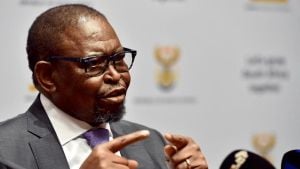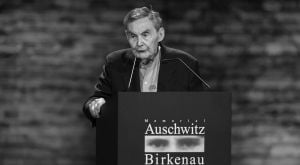Prime Minister Narendra Modi met with Indian-American billionaire entrepreneur Vivek Ramaswamy at Blair House, Washington, D.C., on February 13, 2025, during his visit to the United States. This bilateral meeting, which took place against the backdrop of Modi's first visit to the U.S. since Donald Trump’s re-election, marks a significant moment for India-U.S. relations.
Calling the meeting “a pleasure and honour,” Ramaswamy expressed his hope for PM Modi to have “a wonderful visit.” His sentiments were shared on social media, highlighting the enthusiasm surrounding the discussions. Modi’s interactions during this trip are aimed at enhancing the India-U.S. Comprehensive Global Strategic Partnership, emphasizing innovation and entrepreneurship
The Ministry of External Affairs spokesperson Randhir Jaiswal characterized the exchange between Modi and Ramaswamy as “insightful discussions focused on India-U.S. ties, innovation, biotechnology, and the role of entrepreneurship in shaping the future.”
Ramaswamy, who previously ran for the Republican presidential nomination and served as co-head of the U.S. Department of Government Efficiency (DOGE), has been vocal about strengthening ties between the two nations. His experience and advocacy reflect the potential for increased collaboration, especially as the India-U.S. partnership navigates new frontiers.
During his visit, PM Modi also met with notable figures such as tech mogul Elon Musk to discuss sectors like space, mobility, technology, and energy. These discussions align with Modi's vision of “Minimum Government, Maximum Governance,” which focuses on enhancing efficiency and innovation through collaboration.
Ramaswamy's previous political campaign and eventual endorsement of Donald Trump revealed his commitment to Republican values, and his recent meeting with Modi appears to weave together these political threads. His step down from DOGE to concentrate on Ohio's gubernatorial race adds another layer of political navigation as Modi seeks support from influential American figures.
Upon arriving at the Blair House, PM Modi was received warmly by the ambassador of India to the U.S., Vinay Mohan Kwatra, and other officials. This welcome was not merely ceremonial; it symbolized the diplomatic engagement being invigorated by Modi’s visit.
Modi’s arrival on February 12 was met with anticipated eagerness. He emphasized his commitment to build on the strategic partnership established during his first term, stating, “Landed in Washington DC. Looking forward to meeting @POTUS Donald Trump and building upon the India-USA Comprehensive Global Strategic Partnership.” This proactive stance indicates Modi's intent to deepen collaborations across various sectors, including trade and technology.
Through his interactions, Modi showcased his dedication to not only advancing political dialogues but also promoting cultural exchanges, which were the core elements of the discussions with Ramaswamy. Both leaders shared insights on the immense potential inherent in their respective countries' innovations and entrepreneurial capacities.
Further to his meetings, PM Modi also engaged with U.S. National Security Advisor Michael Waltz and Director of National Intelligence Tulsi Gabbard, whose recent appointment was marked by her swearing-in ceremony just hours before Modi's arrival at Blair House. These quick engagements display the urgency and significance of Modi's visit, reflecting the shared interests of both nations.
According to Modi, the importance of governance and innovation was also central to his discussions with Musk. The focus on “collaboration between Indian and U.S. entities” highlighted the mutual benefits of partnerships aimed at sustainability and technological advancement.
Ramaswamy's presence during Modi's visit signifies the role of Indian-Americans as bridge-builders between the two nations, fostering dialogues and collaborations. “Had a very good meeting with @elonmusk in Washington DC. We discussed various issues, including those he is passionate about such as space, mobility, technology, and innovation,” Modi shared, showcasing the extensive scope of his diplomatic mission.
Through these meetings, Modi's administration reinforces its position to conquer global challenges with the assistance of American entrepreneurs and leaders, striving for impactful governance and result-oriented partnerships.
Modi and Ramaswamy's exchanges illuminate the prospects of continued collaboration between India and the U.S., stressing on technological advances and partnerships geared toward resolving pressing global issues.
With this visit set on strengthening ties, PM Modi and leaders like Ramaswamy represent the dynamic interplay between politics, innovation, and governance. The road forward may be paved with mutual cooperation, shared visions, and the drive for meaningful progress.



